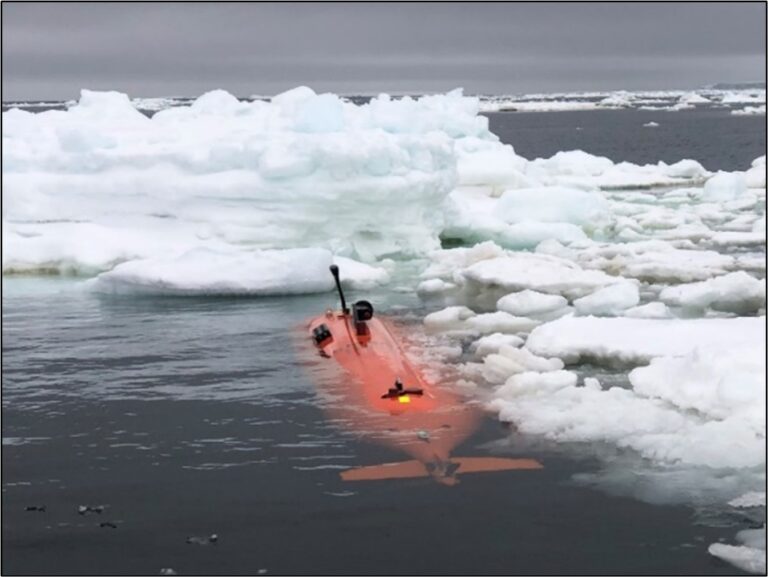An autonomous submarine has successfully been used to collect data from underneath the remote Thwaites glacier in West Antarctica. The data has revealed that the supply of warm water to the glacier is larger than previously thought. This has triggered concerns of faster melting and accelerating ice flow.
The submarine deployment was undertaken as part of the International Thwaites Glacier Collaboration’s (ITGC) TARSAN and THOR projects, which are studying how atmospheric and oceanic processes are influencing the behavior of the Thwaites and Dotson ice shelves.
The autonomous submarine, called Ran, was deployed under Thwaites glacier in 2019. The submersible measured the strength, temperature, salinity and oxygen content of the ocean currents that penetrate under the glacier.
“These were the first measurements ever performed beneath the ice front of Thwaites glacier. Global sea level is affected by how much ice there is on land, and the biggest uncertainty in the forecasts is the future evolution of the West Antarctic Ice Sheet,” said Anna Wåhlin, professor of oceanography at the University of Gothenburg.
Professor Karen Heywood of the University of East Anglia, a principal investigator on the TARSAN project, added, “This was Ran’s first venture to polar regions and her exploration of the waters under the ice shelf was much more successful than we had dared to hope. We plan to build on these exciting findings with further missions under the ice next year.”
The results have been used to map the ocean currents underneath the floating part of the glacier. The team discovered that there is a deep connection to the east through which deep water flows from Pine Island Bay, a connection that was previously thought to be blocked by an underwater ridge. The team also measured the heat transport in one of the three channels that lead warm water toward Thwaites Glacier from the north.
“The channels for warm water to access and attack Thwaites weren’t known to us before the research. Using sonars on the ship, nested with very high-resolution ocean mapping from Ran, we were able to find that there are distinct paths that water takes in and out of the ice shelf cavity, influenced by the geometry of the ocean floor,” said Dr Alastair Graham, from the University of Southern Florida.
The researchers also noted that large amounts of meltwater flowed north away from the front of the glacier. Variations in salinity, temperature and oxygen content indicate that the area under the glacier is a previously unknown active area where different water masses meet and mix with each other, which is important for understanding the melting processes at the base of the ice.
The observations show warm water approaching from all sides on pinning points, critical locations where the ice is connected to the seabed and give stability to the ice shelf. Melting around these pinning points may lead to instability and retreat of the ice shelf and, subsequently, the upstream glacier flowing off the land.
The findings of this research have been published in the journal Science Advances.



